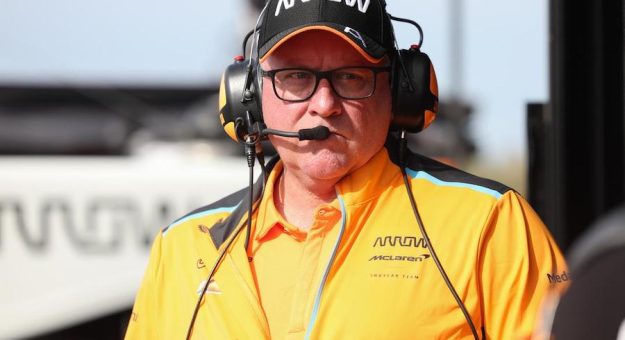“We won a lot of races. We won the championship in 1990. That was a lot of fun. Al was great to be around and had one of those magical seasons in 1990.”
Two years later, Barnhart and Unser were in victory lane after winning the 1992 Indianapolis 500 in what remains the closest finish in Indy 500 history.
Two years after that, Barnhart and Unser were back in victory lane at Indianapolis Motor Speedway after Unser scored his second Indy 500 win with Team Penske.
“Al had interest in my joining him and I had interest in it as well,” Barnhart said. “I was very fortunate at the time to join Penske Racing. With the expansion from a two-car team to three cars, they had a need for some additional race team mechanics, and I was fortunate to be put on Al’s car.
“That was the year we ran ‘The Beast’ pushrod engine at the speedway and had a real successful year. Al won the championship, won eight races and the team won 12 of the 16 races on the schedule, to finish 1-2-3 in the championship.
“That was quite a successful year.”
One year later, Barnhart made a dramatic career choice. Charlie Thompson was retiring as the superintendent of Indianapolis Motor Speedway and IMS President Tony George was looking for a younger man to take over the role.
He chose Barnhart, creating a career path that became a wild and bumpy ride.
“I thought it would be a good opportunity after experiencing what I did with some Indy 500 wins,” Barnhart said. “I thought I would get off the road and work at the speedway and it was a great opportunity.”
Barnhart held that role beginning in October 1994. But George had also rocked the Indy car world by creating the Indy Racing League, which ran its first race on Jan. 27, 1996.
Although Barnhart was the superintendent of IMS, his duties included track safety and preparing a one-mile oval at Walt Disney World Speedway in Florida.
When Leo Mehl was chosen to lead the Indy Racing League in 1997, he tabbed Barnhart to join him after the series dumped USAC as its sanctioning body following the Texas Motor Speedway officiating fiasco in June 1997.
Mehl put together a crew that would conduct the officiating for the IRL before it’s next race at Pikes Peak Int’l Raceway a few weeks later and Barnhart was in charge.
He became a polarizing figure, partly due to some controversial officiating calls, such as the end of the 2002 Indianapolis 500 and the infamous Helio Castroneves vs. Paul Tracy finish that begged the question, “Who was in front at the time of the yellow light that ended the race?”
But mostly, it was because the CART fans and teams hated anybody involved with the IRL.
“There were a lot of people that felt very strongly on both sides of the fence from where it was at and understandably so,” Barnhart explained. “To be honest with you, it was such a learning experience for me, I was drinking from a firehose in a totally different role and position from anything I had ever envisioned or imagined doing.
“It was certainly quite a learning experience on the fly, for sure.”
Through it all, Barnhart remained, solid as a rock.
“I look back at what we were accomplishing, when Tony George formed the Indy Racing League, he had a lot at stake, a lot at risk, a lot to lose and not much to gain, but he clearly felt it was the right thing to do to protect his family’s investment,” he recalled. “We really had some challenges with qualities of equipment, qualities of teams and qualities of drivers out there that made the task at hand even more challenging.
